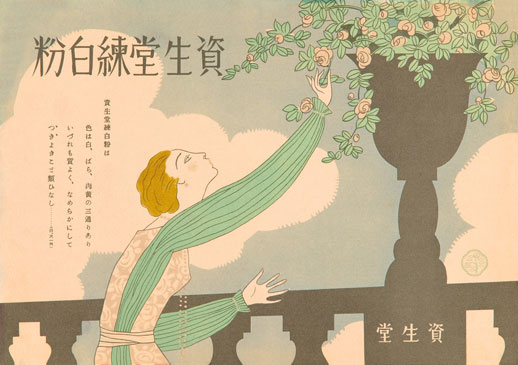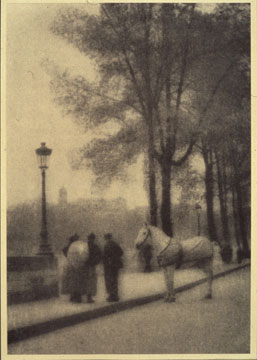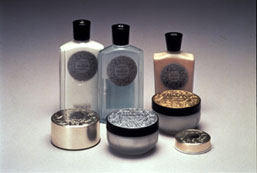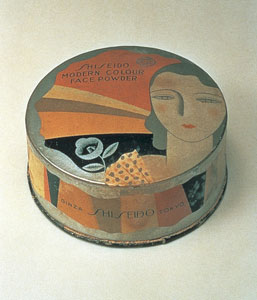Retrospective of a Corporate Artist
Mobos, or modern boys, were the original Tokyo dandies. Looking westward for inspiration, these bohemian figures were the upstarts of the Taisho era (1912 – 1926), and together with their mogas, they had a penchant for hanging out in Tokyo’s then swinging Ginza district. It is in this context that Setagaya Museum of Art’s latest exhibition presents Shinzo Fukuhara’s work and how he came to define “Shiseido style,” the iconic image of Japan’s top cosmetic company.

The third son of Shiseido’s founder, Fukuhara was a trained artist and an accomplished photographer who had traveled Europe at the turn of the last century, taking in the height of Modernism in Paris. Later, as president of Shiseido, his vision was largely responsible for turning Shiseido into a symbol of modernity in Japan, not only for marketing scientifically engineered products, but also for introducing the contemporary concepts of advertising, branding, and product design that he had encountered in Europe.

The exhibition looks at his legacy both as an artist and in his role in creating the corporate culture of Shiseido, with its reputation for upholding high standards of beauty, art, and design. While there have been exhibitions over the years, both in Japan and abroad, that have looked at Shiseido’s contribution as a company to the development of advertising and product design, as well as to the art world through the patronage of the Shiseido Collection, none have placed the crown so firmly on Fukuhara himself.
As the exhibition endeavors to show, Fukuhara has had a singular influence, most notably in the creation of the Shiseido Design Studio in 1916, which enlisted accomplished artists and designers in the creation of product design and advertisement. At the time this would have been both novel and a bit absurd, considering that Shiseido had then but one store. Fukuhara is also credited, along with his brother Roso, as having been an important early promoter of photography in Japan.
Divided over several rooms into seven sections that cover fields as diverse as art, design, photography, advertising and fashion, the exhibition is both broad and eclectic. One wall is devoted to Fukuhara’s own photography, while another shows Shiseido advertisements over the years: from 1930s illustrations of demure women to the startling bronzed women in four color print from the 1960s through to today’s impossibly perfect computer-crafted images. Meanwhile, glass cases display lipstick tubes and perfume bottles from the last century.

Then there are the photos and letters from Fukuhara that open the exhibit, chinaware from the gallery ice cream parlor circa 1950, and a recreation of the studio used by Ayao Yamana, the illustrator whose graceful strokes and curlicues have become synonymous with Shiseido style. The final room has selected art pieces from the Shiseido Collection, concluding with a drawing from Cai Guo-Qiang’s recent summer show at the Shiseido Gallery.
There is a lot to make sense of and the organization of the exhibition is a little loose; the arrangement is partly chronological and partly thematic. The binding element is the concept of Shiseido style, which is to be seen as carefully considered, all the way down to the cutlery, with the idea that Shiseido is the house that Fukuhara built.

The personal element that Fukuhara, as an artist, traveler, collector, pharmacist, and corporate visionary, brings to the legacy of his company is noteworthy. The Setagaya Art Museum’s exhibition, however, walks a fine line: certainly Fukuhara and his progeny are to be lauded for discovering, promoting, and employing up-and-coming artists, yet with advertisements placed alongside works of fine art all in the name of Shiseido, the question of where the actual advertising element ends becomes significant.
Just as the line between art and advertising is difficult to draw, so is the one between Fukuhara the artist and Fukuhara the master brander. Though we perhaps needn’t draw lines, there is a tension between art that seeks novel ways of illuminating our world and art that is employed in glorifying a particular product for mass commercial gain.
A more profound discussion of the uneasy relationship between art and business would have been welcome, however the show does not aim for that. The display may be a bit cluttered, but this abundance of delightful artifacts leaves you with a detailed historical overview of Shiseido’s evoluton from Fukuhara’s initial vision of a corporate aesthetic to the company as a major player in the fashion and beauty mega-industry that commands so much of our urban consciousness these days.
Rebecca Milner
Rebecca Milner


